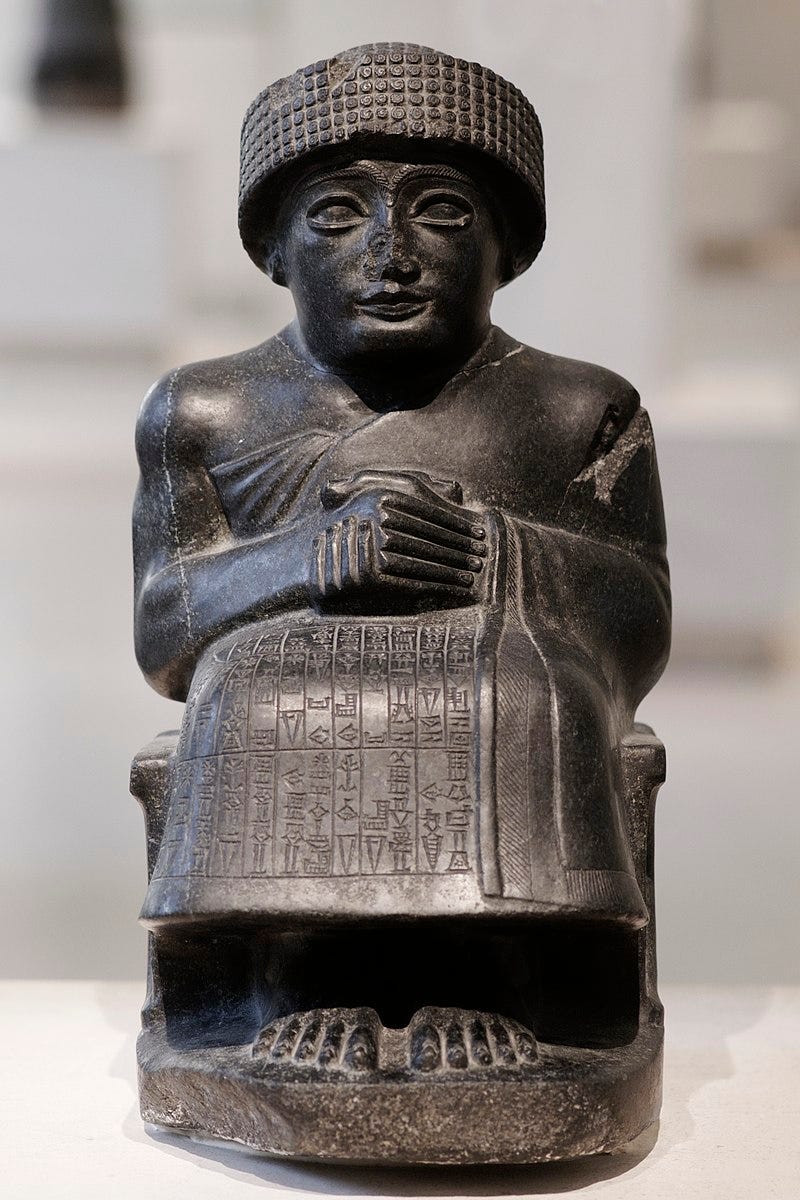While Gutians do appear as the dominant power, a second dynasty at Lagash rises to a period of opulence under a ruler known as Gudea c. 2144-2124 BC.1 Previous kings of Lagash are vassals of the Akkadians, but under Gudea, Lagash uses the power vacuum as an opportunity to assert Lagash’s independence. An almost unprecedented number of statues of Gudea have been discovered, and thousands of inscriptions attesting to the veracity of his reign.2 The longest known text written in Sumerian cuneiform is actually the “Gudea cylinders” showing not just military strength, but also a cultural output that flourished in this short lived period.3
Additionally, the vast material required for his construction projects and temple renovations came from all across the world. Gudea had trade contacts in numerous regions getting copper from Arabia, cedar from the Lebanese mountains, gold and precious stones as far as Canaan, or Egypt45, diorite for his statues from Magan (Oman) and timber from Dilmun (Bahrain)6 and even goods from Goa, India are attested in this period.7 Unlike Akkad, Lagash was satisfied through a more economically based trade empire.
Zarins, Juris, "Lagash and the Gutians: a study of late 3rd millennium BC Mesopotamian archaeology, texts and politics", In Context: the Reade Festschrift, pp. 11-42, 2020
H. Steible, "Neusumerische Bau- und Weihinschriften, Teil 1: Inschriften der II. Dynastie von Lagas", FAOS9/1, Stuttgart 1991
Suter, Claudia E., "A New Edition of the Lagaš II Royal Inscriptions Including Gudea’s Cylinders", Journal of Cuneiform Studies, vol. 50, pp. 67–75, 1998
Moorey, Peter Roger Stuart (1999). Ancient Mesopotamian Materials and Industries: The Archaeological Evidence. Eisenbrauns. p. 245.
Thomason, Allison Karmel (2017). Luxury and Legitimation: Royal Collecting in Ancient Mesopotamia. Routledge. p. 87.
Thapar, Romila (1975). "A Possible Identification of Meluḫḫa, Dilmun and Makan". Journal of the Economic and Social History of the Orient. 18 (1): 1–42.
Souza, Teotonio R. De (1990). Goa Through the Ages: An economic history. Concept Publishing Company. p. 2.





